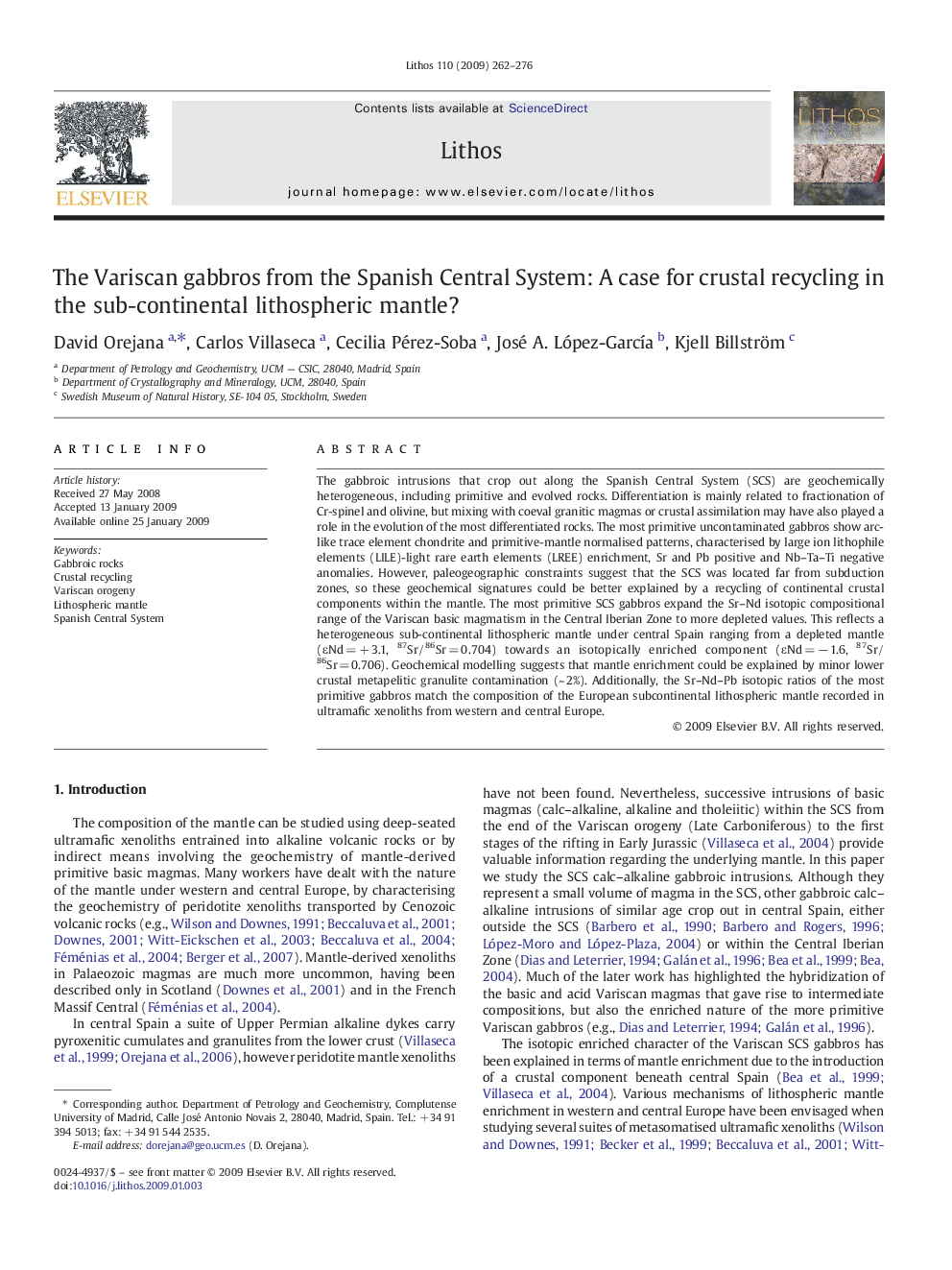| کد مقاله | کد نشریه | سال انتشار | مقاله انگلیسی | نسخه تمام متن |
|---|---|---|---|---|
| 4717339 | 1638744 | 2009 | 15 صفحه PDF | دانلود رایگان |

The gabbroic intrusions that crop out along the Spanish Central System (SCS) are geochemically heterogeneous, including primitive and evolved rocks. Differentiation is mainly related to fractionation of Cr-spinel and olivine, but mixing with coeval granitic magmas or crustal assimilation may have also played a role in the evolution of the most differentiated rocks. The most primitive uncontaminated gabbros show arc-like trace element chondrite and primitive-mantle normalised patterns, characterised by large ion lithophile elements (LILE)-light rare earth elements (LREE) enrichment, Sr and Pb positive and Nb–Ta–Ti negative anomalies. However, paleogeographic constraints suggest that the SCS was located far from subduction zones, so these geochemical signatures could be better explained by a recycling of continental crustal components within the mantle. The most primitive SCS gabbros expand the Sr–Nd isotopic compositional range of the Variscan basic magmatism in the Central Iberian Zone to more depleted values. This reflects a heterogeneous sub-continental lithospheric mantle under central Spain ranging from a depleted mantle (εNd = + 3.1, 87Sr/86Sr = 0.704) towards an isotopically enriched component (εNd = − 1.6, 87Sr/86Sr = 0.706). Geochemical modelling suggests that mantle enrichment could be explained by minor lower crustal metapelitic granulite contamination (~ 2%). Additionally, the Sr–Nd–Pb isotopic ratios of the most primitive gabbros match the composition of the European subcontinental lithospheric mantle recorded in ultramafic xenoliths from western and central Europe.
Journal: Lithos - Volume 110, Issues 1–4, June 2009, Pages 262–276